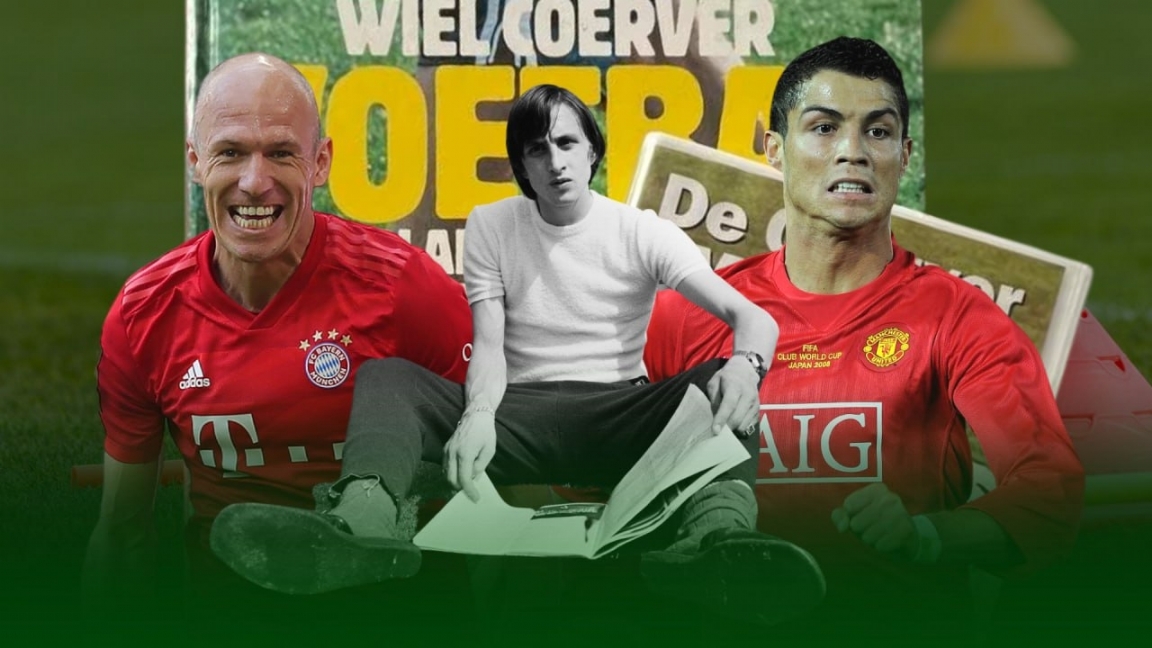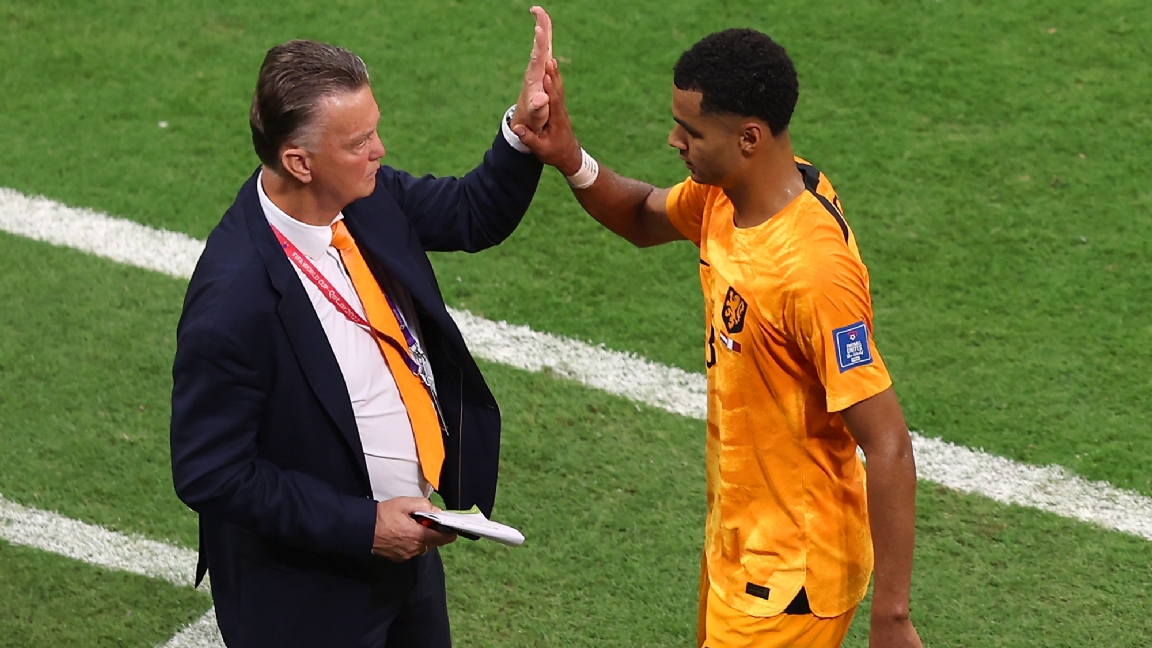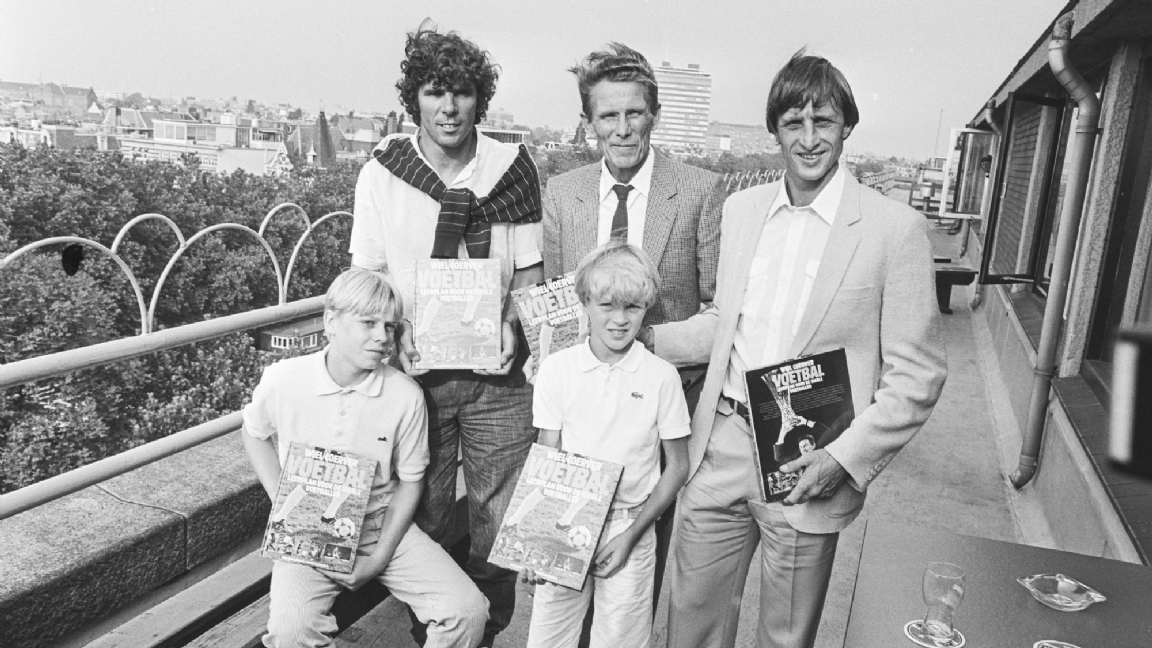![]()


From total football to anti-football and everything in between. Winning the coveted points has come in all shapes and sizes since time immemorial. In the section Style figures go Football zone along the fields of yesteryear to examine fabulous formations, cultural interpretations and special player roles. In this edition: the Wiel Coerver method, how the Dutch ‘Einstein of football’ made an internationally recognized science of ‘cutting and turning’.
By Kevin van Buuren
When Louis van Gaal, after an unorthodox World Cup, explains his unorthodox way of playing, he points to the shortcomings of Dutch football. “You need wingers who can outplay a man. Our football currently does not have that.” Based on the 5-3-2 formation, his Dutch national team played without the usual class division of the Hollandse School, and without the former representative: the classic winger. Its extinction was already predicted by fellow football connoisseur Sjaak Swart, Freek Jansen, as well as by the creator and kneader of the pedigree football player: the late Wiel Coerver.

Van Gaal indicates during the 2022 World Cup that he has a shortage of world-class wingers.
Johan Cruijff also trusted the primal quality of his wingers. “If my attacker comes one against one, let him figure it out for himself. There is a good chance that you will get in the way, and as a second attacker you also bring a second defender,” he said as a trainer. In the age where dangerous wingers get double man-marking, that quality seems to have become obsolete. As if with a bad poker hand, the winger bluffs, pretending to pass his man. In the meantime, he waits for an overlapping back like Denzel Dumfries, gives an early cross, or combines á la Manchester City into the penalty area. That makes it seem like the classic winger is the kind that didn’t survive the football evolution, but what excludes the other? Did the game develop, causing the winger to disappear, or did the winger disappear, so the game had to develop?
The Einstein of football
As a pioneer of playing football with guts, Coerver would have known what it was all about: training. As a player, he was largely active before football in the Netherlands fully professionalized. A year before the foundation of the Eredivisie, Coerver became champion with Rapid JC, the predecessor of Roda JC, in the year 1956. However, he made his true furore as a trainer. Only expressed in prizes by winning the national title and UEFA Cup in 1974 with Feyenoord. But he was the first to bring SVN to the top of amateur football; seven players he trained eventually made it to professional football. His eventual legacy was even grander. Coerver made a structured profession of training. At a time when sessions consisted of conditional work and normal football, the coach filled the curriculum with technique and ball control, repeated over and over again.

Wiel Coerver (middle) promotes his book together with Willem van Hanegem (left) and Johan Cruijff (right).
Still, not everyone was a fan of Coerver. At the basis of his technical baggage, which he passed on to players, was building up condition through the endurance run. According to Willem van Hanegem, who won the UEFA Cup as a player under Coerver and would lose the European Championship final a few months later, that was ‘not really his hobby’. At L1 Limburg he also explained Coerver’s flaws. “He wanted to turn everyone into a Pelé or Beckenbauer. While not everyone had that in them.” According to stories, Coerver would have inspired his method, among other things, by watching hours of video material of football players like Pelé. “Moreover, Van Hanegem continued, “his vision was more applicable to young players.” Jan Boskamp, also UEFA Cup winner with Feyenoord in 1974, emphasized Coerver’s tough character. “During a walk I walked two meters behind him. Then I heard Coerver say: ‘That Boskamp is worthless’. I wanted to fly him to the throat and was like: now I have to get out of here. If I hadn’t had a problem with Wiel, I would never have left Feyenoord,” he told the podcast Play Sports.
The groundbreaking ‘Coerver method’ was documented in the book, among others Football: curriculum for the ideal footballerwhich he co-wrote with Johan Derksen, countless DVDs, internationally distributed football schools and the AVRO Tros-Series Playing football with Wiel Coerver. Coerver’s training was based on a layered pyramid. And just as in Maslow’s pyramid certain needs only arise when another need is fulfilled, the football player in Coerver’s pyramid can only enter the next layer when the previous one has been completed. It all starts with mastery of the ball; then fit and receive; attack and defend one against one; speed; finishing and creating chances; and finally, working in a team. Youth, as flexible as it is, was the cornerstone of his training, but more experienced players also benefited from the material.
In the vernacular, Coerver’s theory was almost cynically summarized as ‘cutting and turning’, about which youth players are often advised not to do too much. It is the techniques the youngster learns on the street that disappear on the field. “Everything has been studied or studied, packed in a package, While football’s greatest teacher remains on the street,” said Cruijff about the modern training content. Coerver was not a fan of the ‘schoolmaster climate’ either. “German football has six million members. Not one of them excels at passing a man. They are not taught,” he said in 2009. In the Netherlands, he knew a great supporter in René Meulensteen. After Coerver dies of pneumonia in 2011, Meulensteen lays down VI radio explains how he applied the Coerver method at Alex Ferguson’s Manchester United. “I immediately applied it to the training. Ronaldo already has a huge talent of his own, but because we started training very specifically for that, we started making sure that he became much more effective. All players from the first team are trained according to his method, it is about small things, which makes a player unpredictable.”
Make the difference
Cristiano Ronaldo is growing into the winger that the Netherlands is currently missing, according to Van Gaal. “In global football, it’s about those footballers who make the difference with goals, assists and chances. That ‘making a difference’ has made Coerver trainable. Players who dominate in the one-on-one, they can make the difference.” Coerver was less convinced of tactical clues. According to him, the formula for success was simpler: “More technique than the opponent, plus the will to win.” Van Gaal saw the lack of pure technique in the one-on-one situation, which Coerver disciple Joep Haan attributes to the training. Of Football International he spoke about how Coerver, partly because of his kick against the policy, was never undisputed within the KNVB. For example, he called the policy in Zeist several times ‘nonsense’, and every guy in England, Spain or Italy could stand in front of the group. He also said: “I had an A in psychology, but I always argued with everyone.” Haan would have liked to see the relationship differently. “I would have loved to see the KNVB fully embrace Wiels method. Then it was not so bad with the technology in the Eredivisie.”
The question is whether tactics, contrary to Coerver’s principles, have not undeniably gained ground against technology. An analysis of Between the Lines shows that backs are more dangerous in 2020/2021 than in the past. “In the top 25 most dangerous players are nine fullbacks.” Compared to five years earlier, the backs score 34 percent more goals; the number of assists increased by twenty percent. What happens without the ball is more decisive than the one with the ball at his foot, face to face with his direct opponent. Even the best ‘away player’ in the Netherlands, Frenkie de Jong, uses his art from midfield to then create a man-more situation and let the ball do the work again. Shortly before his death, Cruijff pleaded once more for Coerver’s curriculum, ‘the Einstein of football’. “From Ajax to a school team, they are all obliged to train on technique.”
